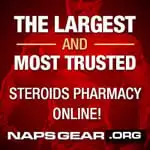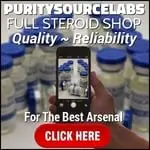In Norway ala is not legal, so I have always taken Silybum marianum (Milk Thistle).
All I can say is that it is working for me...
Silybum marianum
Description and Constituents
Silybum marianum (milk thistle) has been used for centuries as an herbal medicine for the treatment of liver disease. Its use for liver disorders dates back to Pliny the Elder, a Roman naturalist, who described milk thistle as being "excellent for carrying off bile."1 Milk thistle is an annual or biennial plant indigenous to Europe and is also found in some parts of the United States. It grows in rocky soils to a height of three to ten feet with an erect stem that bears large, alternating, prickly-edged leaves. The common name, milk thistle, is derived from the "milky white" veins on the leaves, which, when broken open, yield a milky sap. Flowering season is from June to August, and each stem bears a single, large, purple flower ending in sharp spines. The fruit portion of the plant is glossy brown or grey with spots.2-4 Silybum marianum contains silymarin, which is composed of the flavanolignans silybin, silydianin, and silychristine, with silybin being the most biologically active. Silymarin is found in highest concentrations in the fruit portion of the plant but is also found in the leaves and seeds. The seeds also contain betaine, trimethylglycine and essential fatty acids, which may contribute to silymarin's hepatoprotective and anti-inflammatory effects.
Mechanisms of Action
Silymarin's hepatoprotective effects are accomplished via several mechanisms including antioxidation,8 inhibition of lipid peroxidation,9 enhanced liver detoxification via inhibition of Phase I detoxification and enhanced glucuronidation,10,11 and protection of glutathione depletion.12 Studies have also shown silymarin exhibits several anti-inflammatory effects, including inhibition of leukotriene and prostaglandin synthesis, Kupffer cell inhibition, mast cell stabilization, and inhibition of neutrophil migration.13-17In addition, silymarin has been shown to increase hepatocyte protein synthesis, thereby promoting hepatic tissue regeneration.18Animal studies have also demonstrated silybin reduces the conversion of hepatic stellate cells into myofibroblasts, slowing or even reversing fibrosis.19 Clinical studies conducted in Hungary also demonstrated silymarin to have immunomodulatory effects on the diseased liver.20,21
Pharmacokinetics
Silymarin is not water soluble, making tea preparations ineffective; therefore it is usually administered orally in encapsulated form. Because absorption of silymarin from the gastrointestinal tract is only moderate (23-47%), it is best administered as a standardized extract of 70-80 percent silymarin. In animals and humans, peak plasma levels are reached in four to six hours after an oral dose. Silymarin is excreted primarily via the bile but some clearance is also achieved via the kidneys. The clearance half-life of silymarin is six to eight hours.22,23
Clinical Indications
Amanita Mushroom Poisoning
The most impressive use of silymarin is in the treatment of Amanita phalloides mushroom poisoning. The genus Amanita is widespread in Europe and North America with several edible species being prized by mushroom collectors. Unfortunately, many of the Amanita species are highly toxic, and ingestion results in severe liver damage and death in approximately 30 percent of cases.24 In animal studies, silymarin given within 10 minutes after amanita toxin ingestion completely counteracted the toxic effects, and if given within 24 hours of toxin ingestion silymarin prevented death and greatly reduced liver damage.25
Hepatitis
Studies have shown silymarin to be effective in the treatment of both acute and chronic hepatitis. In acute viral hepatitis, administration of silymarin shortened treatment time and lowered serum bilirubin, AST, and ALT. In patients with chronic hepatitis, 420 mg silymarin per day for six months also yielded improved serum liver enzymes.26
Alcoholic Liver Disease and Cirrhosis
Studies conducted in Austria and Hungary have demonstrated silymarin administration resulted in a normalization of serum liver enzyme and total bilirubin levels in patients with alcoholic liver disease, in addition to improved liver tissue histology.27 In patients with cirrhosis, long-term (41 months) administration of silymarin at 420 mg per day resulted in a significant increase in survival compared to the placebo group.28
Hypercholesterolemia
An animal study found silymarin given to rats with diet-induced hypercholesterolemia demonstrated an anticholesterolemic effect similar to probucol, with an increase in HDL cholesterol and a decrease in total and biliary cholesterol.29
Psoriasis
The value of silymarin in the treatment of psoriasis may be due to its ability to improve endotoxin removal by the liver, inhibit cAMP phosphodiesterase, and inhibit leukotriene synthesis. Abnormally high levels of cAMP and leukotrienes have been observed in patients with psoriasis and normalization of these levels may improve the condition.13,30
Dosage/Toxicity
Silybum marianum is usually given as a standardized extract (70-80% silymarin) in encapsulated form, 100-300 mg three times daily being the typical adult dose. Both animal and human studies have shown silymarin to be non-toxic. At high doses (>1500 mg per day) a laxative effect is possible due to increased bile secretion and flow. Mild allergic reactions have also been noted but were not serious.
References
1. Pliny the Elder, Historia Naturalis 77 A.D.
2. Bisset N. Herbal Drugs and Pharmaceuticals. London: CRC Press; 1994:121-123.
3. Gruenwald J, Brendler T, Jaenicke C. PDR for Herbal Medicines. Montvale, NJ: Medical Economics Company, Inc.; 1998:1138-1141.
4. Luper S. A review of plants used in the treatment of liver disease: part 1. Altern Med Rev 1998;4:410-421.
5. Wagner H. Antihepatotoxic flavonoids. In: Cody V, Middleton E, and Harbourne JB eds. Plant Flavonoids in Biology and Medicine: Biochemical, Pharmacological, and Structure-Activity Relationships. New York, NY: Alan R. Liss, Inc.; 1986:545-558.
6. Adzet T. Polyphenolic compounds with biological and pharmacological activity. Herbs Spices Medicinal Plants 1986;1:167-184.
7. Hikino H, Kiso Y, Wagner H, Feibig M. Antihepatotoxic actions of flavonolignans from Silybum marianum fruits. Planta Medica 1984;50:248-250.
8. Wagner H. Plant constituents with antihepatotoxic activity. In: Beal JL, Reinhard E eds. Natural Products as Medicinal Agents. Stuttgart: Hippokrates-Verlag; 1981.
9. Bosisio E, Benelli C, Pirola O, et al. Effect of the flavanolignans of Silybum marianum L. on lipid peroxidation in rat liver microsomes and freshly isolated hepatocytes. Pharmacol Res 1992;25:147-154.
10. Baer-Dubowska W, Szaefer H, Drajka-Kuzniak V. Inhibition of murine hepatic cytochrome P450 activities by natural and synthetic phenolic compounds. Xenobiotica 1998;28:735-743.
11. Halim AB, el-Ahmady O, Hassab-Allah S, et al. Biochemical effect of antioxidants on lipids and liver function in experimentally-induced liver damage. Ann Clin Biochem 1997;34:656-663.
12. Campos R, Garido A, Guerra R, et al. Silybin dihemisuccinate protects against glutathione depletion and lipid peroxidation induced by acetaminophen on rat liver. Planta Med 1989;55:417-419.
13. Fiebrich F, Koch H. Silymarin, an inhibitor of lipoxygenase. Experentia 1979;35:150-152.
14. Dehmlow C, Erhard J, de Groot H. Inhibition of Kupffer cell functions as an explanation for the hepatoprotective properties of silibinin. Hepatology 1996;23:749-754.
15. Fantozzi R, Brunelleschi S, Rubino A, et al. FMLP-activated neutrophils evoke histamine release from mast cells. Agents Actions 1986;18:155-158.
16. Dehmlow C, Murawski N, de Groot H, et al. Scavenging of reactive oxygen species and inhibition of arachidonic acid metabolism by silibinin in human cells. Life Sci 1996;58:1591-1600.
17. De La Puerta R, Martinez E, Bravo L. Effect of silymarin on different acute inflammation models and on leukocyte migration. J Pharm Pharmacol 1996;48:968-970.
18. Sonnenbichler J, Zetl I. Biochemical effects of the flavanolignane silibinin on RNA, protein and DNA synthesis in rat livers. In: Cody V, Middleton E, Harbourne JB, eds. Plant Flavonoids in Biology and Medicine: Biochemical, Pharmacological, and Structure-Activity Relationships. New York, NY; 1986:319-331.
19. Fuchs EC, Weyhenmeyer R, Weiner OH, et al. Effects of silibinin and of a synthetic analogue on isolated rat hepatic stellate cells and myofibroblasts. Arzneimittelforschung 1997;26:643-649.
20. Deak G, Muzes G, Lang I. Immunomodulator effect of silymarin therapy in chronic alcoholic liver diseases. Orv Hetil 1990:131:1291-1292, 1295-1296. [Article in Hungarian]
21. Lang I, Nekam K, Gonzalez-Cabello R. Hepatoprotective and immunological effects of antioxidant drugs. Tokai J Exp Clin Med 1990;15:123-127.
22. Schandalik R, Gatti G, Perucca E, et al. Pharmacokinetics of silybin in bile following administration of silipide and silymarin in cholecystectomy patients. Arzneimittelforschung 1992;42:964-968.
23. Tyler V. Herbalgram 1994;30:24-30.
24. Vogel G, Tuchweber B, Trost W. Protection by silibinin against Amanita phalloides intoxication in beagles. Toxicol Appl Pharmacol 1984;73:355-362.
25. Desplaces A, Choppin J, Vogel G, Trost W. The effects of silymarin on experimental phalloidine poisoning. Arzneimittelforschung 1975;25:89-96.
26. Magliulo E, Gagliardi B, Fiori GP. Results of a double blind study on the effect of silymarin in the treatment of acute viral hepatitis, carried out at two medical centres. Med Klin 1978;73:1060-1065. [Article in German]
27. Feher I, Deak G, Muzes G. Liver protective action of silymarin therapy in chronic alcoholic liver diseases. Orv Hetil 1989;130:2723-2727. [Article in Hungarian]
28. Ferenci P, Dragosics B, Dittrich H, et al. Randomized controlled trial of silymarin treatment in patients with cirrhosis of the liver. J Hepatol 1989;9:105-113.
29. Kreeman V, Skottova N, Walterova D, et al. Silymarin inhibits the development of diet-induced hypercholesterolemia in rats. Planta Med 1998;64:138-142.
30. Kock HP, Bachner J, Loffler E. Silymarin: Potent inhibitor of cyclic AMP phosphodiesterase. Meth Find Expel Clin Pharmacol 1985;7:409-413.


 Please Scroll Down to See Forums Below
Please Scroll Down to See Forums Below 










